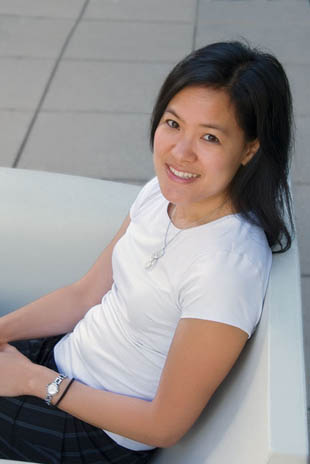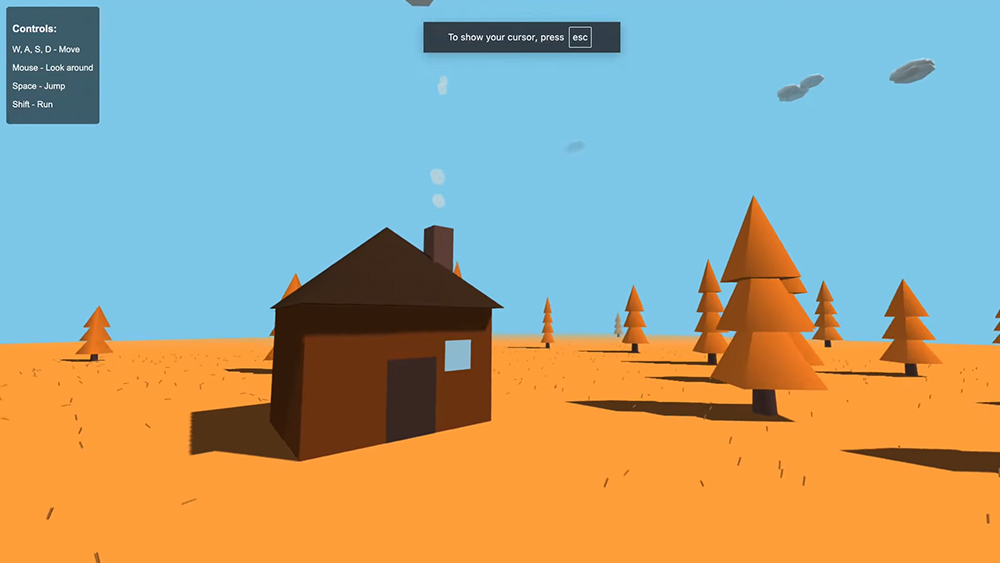Irene Au
Whatever you may think of it, Google’s approach to design is certainly different. Irene Au, the company’s director of user experience, talks to Oliver Lindberg about data-driven design decisions, achieving consistency and user research
When Google’s renowned visual design lead, Douglas Bowman, left the search giant at the end of March, he wrote a passionate blog post about his reasons for quitting. He claimed that the company’s reliance on data was so extreme, it prevented it from making any daring design decisions, and quoted one instance when a team couldn’t decide between two blues, so were testing 41 shades between each of the choices to see which one performed better. Bowman’s post sparked a heated debate on the web.
Irene Au, director of user experience at Google, acknowledges that Bowman is an extraordinary designer who made huge contributions to the company’s products. However, she insists there’s a clear logic behind Google’s approach. “It’s very much a culture of experimentation,” she explains. “We often will put things out on an experimental framework and look at how they perform, and use that to drive our design decisions. Search is the interface that most of our users are familiar with and so what goes into the search interface is really what drives our visual language. Search is such a fragile interface. It’s humbling to see how the slightest changes in design, just pixel-level changes or barely perceptible changes to colours, can have such a dramatic impact on usage and revenue. At Google, we’re in a unique position to measure the impact of design on the business, and we take advantage of that opportunity to make design decisions based on evidence.”
Google understands that designing engaging, useful and usable products with complex workflows requires something more than data
Au, who spent eight years at Yahoo, accepts that some people might feel threatened by the data-driven culture and perceive it to be crippling, but highlights the fact that others might see it as empowering. It’s a challenge to design something that’s as beautiful as it is lightning fast. “One of the best things about designing for the web is that you can instantly see and measure the impact of your changes,” she says. “Google understands that designing engaging, useful and usable products with complex workflows requires something more than data. That’s why we have a significant team of designers who bring unique skills to the teams they work with. Data informs decision-making but it’s less useful for conceiving and building conceptually new directions. It’s most useful for optimising and refining an established concept.”
Historically, engineers vastly outnumber designers at Google (Irene Au herself has degrees in electrical and computer engineering), which makes scaling the design organisation a big challenge. “As a design team, we can’t afford to have very high touch involvement with every single project, where we create pixel-perfect designs and have web developers that are implementing the front end exactly to the specifications,” she says. “Any kind of design system that we create has to be incredibly practical to implement. Our design strategy is all about creating an experience that’s fast, not only in terms of latency, but also in terms of human cognition and perception. One of the ways in which we achieve this fast feel is to have a very minimalist look. Also, Google focuses on aggregating the data and presenting it to the users, so we don’t want it to feel editorialised. We want it to feel machine driven, so people understand that it’s not like we’re presenting results with a certain point of view.”
Setting the standard
Rather than having 30 different styles of tabs, we just choose one or two
Irene Au says the collaboration between designers and engineers is healthy. A lot of the design team’s time is spent on setting standards and building a style guide for engineers to ensure a project will really end up looking like a Google product. “Rather than having 30 different styles of tabs, we just choose one or two,” Au says, “and they’re the canonical types that have been proven to work. Then we create a toolkit for the developers, so that for basic interactions, where the patterns are pretty known and common, they’ll have reusable components. Then at least they can get 70 to 80 per cent of the way there without having a designer involved.”
Google has always had the mantra of ‘focus on the user and all else will follow’, so the company puts a significant amount of effort into researching its users. In fact, Au estimates that 30 to 40 per cent of her 200-strong worldwide user experience team is compromised of user researchers. “Data can be invigorating when you understand the ‘why’ behind the ‘what’,” she explains. “For example, we work with vision scientists to understand how people process information, so we can create better predictive models for what will work. We also use a variety of methods, whether it’s quantitative analysis, data mining or surveys, and do quite a bit of ethnographic work, too. While it’s easy to design for people like yourself, it’s hard to design for people in a totally different environment, so we’ve done field studies and rapid prototyping to better understand what their needs are and how they’re using the internet.”
On the move

One outcome of these studies is Google SMS, a suite of mobile apps that enable people to access information via SMS on topics including health, agriculture tips and local weather. The first country to receive the new service is Uganda, with other areas in Africa, where mobile phones are more common than PCs and only have voice and SMS capabilities, to follow. “When we were prototyping and simulating this SMS-based search service, we had to understand what kind of information people were looking for,” Au explains, “because we couldn’t really scour the world’s information and make it all available via SMS.” The suite also includes Google Trader, a marketplace for any type of product or service, and Google SMS Tips, a question-and-answer tool that interprets search queries, specifically on health and farming issues, and uses a database to return the most relevant answers via SMS.
Au’s design team is also spending a lot of energy on trying to create a coherent design experience. Projects are usually initiated by engineers and designers join in later. This traditionally bottom'up culture can make it difficult, but having more consistency across Google is crucial to build better products and a stronger brand. “There’s already a lot of consistency across Google’s search products but there isn’t much of a relationship between that and a lot of our apps. Many were Google branded and designed after we acquired companies like GrandCentral – so I spend most of my time right now figuring out how to apply the principles behind Google’s design that made Google Search successful to all other products.”
As part of this, Google recently rolled out new logos for all products, featuring a more standardised typeface and layout. The redesign of Google Reader last December was the first project to feature square corners and calmer colours. The changes addressed latency issues, while tying the service back to the brand. When Google Voice (formerly called GrandCentral) launched a few months later, it looked similar to Reader. “This was a very deliberate choice because, as we start rolling out more redesigns and incremental improvements for our products, the look and feel for these products will begin to converge. We’re also working to tie together the mobile experiences on smart phones, so they have a more coherent feel to them and relate better to the desktop experiences.”
Google’s approach to design will continue to divide opinion, but there’s no doubt its refreshingly clean and simple homepage has served the company well. And so, as Google branches out beyond search, its design decisions will become more important than ever. Using a fascinating arsenal of research, user testing and analytics tools, Google has turned this process into a science.

Thank you for reading 5 articles this month* Join now for unlimited access
Enjoy your first month for just £1 / $1 / €1
*Read 5 free articles per month without a subscription

Join now for unlimited access
Try first month for just £1 / $1 / €1
Get the Creative Bloq Newsletter
Daily design news, reviews, how-tos and more, as picked by the editors.

The Creative Bloq team is made up of a group of design fans, and has changed and evolved since Creative Bloq began back in 2012. The current website team consists of eight full-time members of staff: Editor Georgia Coggan, Deputy Editor Rosie Hilder, Ecommerce Editor Beren Neale, Senior News Editor Daniel Piper, Editor, Digital Art and 3D Ian Dean, Tech Reviews Editor Erlingur Einarsson, Ecommerce Writer Beth Nicholls and Staff Writer Natalie Fear, as well as a roster of freelancers from around the world. The ImagineFX magazine team also pitch in, ensuring that content from leading digital art publication ImagineFX is represented on Creative Bloq.
